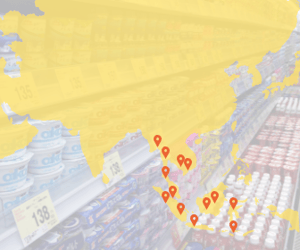Welcome to Step 2 of the 20 Steps to Route to Market Excellence. You can read more about the overall model and the steps I have already discussed here:.
The second step is ‘Consumer & Market Mapping’. This is where you will review how you are currently reaching all the potential places from which your consumers are buying, to maximise sales growth. In the consumer goods business, buying trends, brand distribution, product availability for consumers, and reach, are things managers live and die by. The measurement of these are also critical as they can be a key factor in understanding poor performance or in delivering success. For example, you may have a first-class Route to Market model for retail right across your market, but what if your consumers are moving to digital channels? Or your internal availability/brand distribution measure may show 95%+ on your system, but what if your RtM doesn’t cover all available points of sale?
In the consumer goods business, buying trends, brand distribution, product availability for consumers, and reach, are things managers live and die by. The measurement of these are also critical as they can be a key factor in understanding poor performance or in delivering success. For example, you may have a first-class Route to Market model for retail right across your market, but what if your consumers are moving to digital channels? Or your internal availability/brand distribution measure may show 95%+ on your system, but what if your RtM doesn’t cover all available points of sale?
This is where Step 2 of the 20 Steps model comes in. Here are some examples of questions you can ask under Step 2 – Consumer & Market Mapping:
- What are the current buying trends of my consumers?
- How have these trends shifted in recent years and do we expect them to change soon?
- What are the market specific geographic challenges and realities that we need to be aware of?
- What are the current number of available points of sale in my market?
- Do we have this data available? If so, at what level of detail and how is it maintained?
- Do we need to conduct an ‘Every Dealer Survey’ to map all the points of sale? What are the constraints involved? Could we do this internally or do we need to look externally?
- What is the split between direct vs indirect points of sale?
- How many points of sale are we reaching?
- What are the gaps and why has this happened? Was this a strategic decision or natural development?
- To what extent are there any specific ‘cost to serve’ issues?
- To what extent is the picture similar for our direct competitors and can we learn from them?
- What about the picture for other companies who do not compete with us in our sector?
- What is the population spread of consumers in relation to our coverage of points of sale?
- What percentage (best estimate) of the target consumers are we reaching?
- What are the key battlegrounds and must win areas for the market?
- Where are our gaps in relation to this and how are we going to bridge them?
Getting these foundation steps right in the Assessment phase of the 20 Steps to RtM Excellence can be the difference between beating or missing those sales targets.
I hope you find this helpful, and I appreciate your views and comments below. I will be continuing my series on the 20 Steps to Route to Market Excellence, with Step 3 Distributor Assessment in my next post.
Please subscribe to the blog, you can do so on this page, to ensure you don’t miss out on the latest updates on RtM excellence in execution and the 20 Steps model. If you would like to know more about the 20 Steps to RtM Excellence, please visit our website here.







